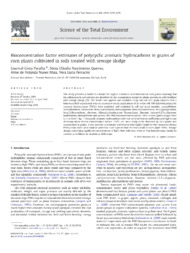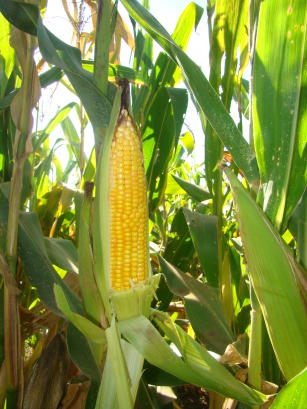Bioconcentration factor estimates of polycyclic aromatic hydrocarbons in grains of corn plants cultivated in soils treated with sewage sludge.
Bioconcentration factor estimates of polycyclic aromatic hydrocarbons in grains of corn plants cultivated in soils treated with sewage sludge.
Author(s): PARAIBA, L. C.; QUEIROZ, S. C. do N. de; MAIA, A. de H. N.; FERRACINI, V. L.
Summary: This study presents a model to simulate the organic substance concentrations in corn grains assuming that the substances in soil solution are absorbed via the transpiration stream by plants growing in soils fertilized with sewage sludge (SS). The model was applied and validated using soil and corn grain samples from a long-term field experiment with six successive yearly applications of SS to the soil. The following polycyclic aromatic hydrocarbons (PAHs) were simulated and evaluated in soil and grain samples: acenaphthene, acenaphthylene, anthracene, benz(a)anthracene, benz(a)pyrene, benz(b)fluoranthene, benz(g,h,i)perylene, benz(k)fluoranthene, chrysene, dibenz(a,h)anthracene, fluoranthene, fluorene, indeno(1,2,3-c,d)pyrene, naphthalene, phenanthrene and pyrene. The PAH bioconcentration factors (BCF) in corn grains ranged from 1.57 to 10.97 L kg?1. Polycyclic aromatic hydrocarbons with low soil distribution coefficients and high values of transpiration stream concentration factors (TSCF) are more likely to be absorbed by corn plants and accumulated in grains. It was possible to estimate and observe that highly lipophilic PAH molecules (heavy PAHs) show lower accumulative potential in corn grains than the less lipophilic ones (light PAHs). Sewage sludges containing significant concentrations of light PAHs with two, three or four benzene rings should be avoided as fertilizers in alimentary field crops.
Publication year: 2010
Types of publication: Journal article
Unit: Embrapa Environment
Observation
Some of Embrapa's publications are published as ePub files. To read them, use or download one of the following free software options to your computer or mobile device. Android: Google Play Books; IOS: iBooks; Windows and Linux: Calibre.
Access other publications
Access the Agricultural Research Database (BDPA) to consult Embrapa's full library collection and records.
Visit Embrapa Bookstore to purchase books and other publications sold by Embrapa.


